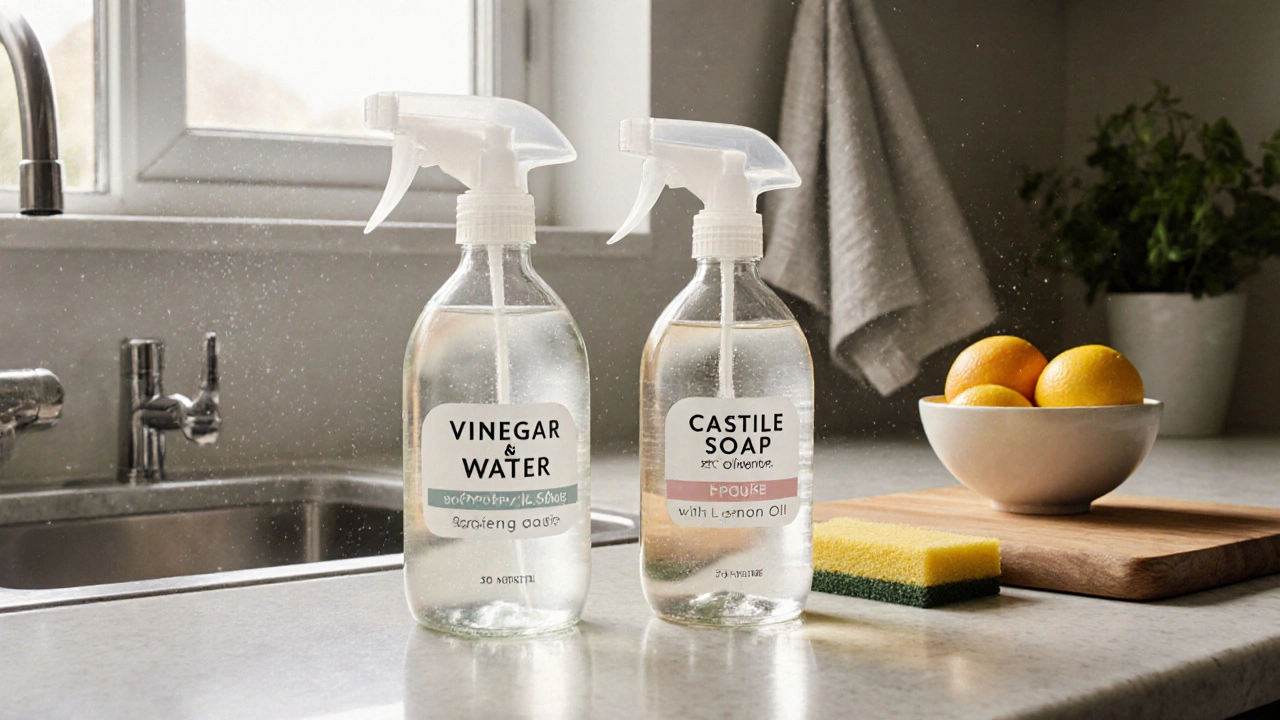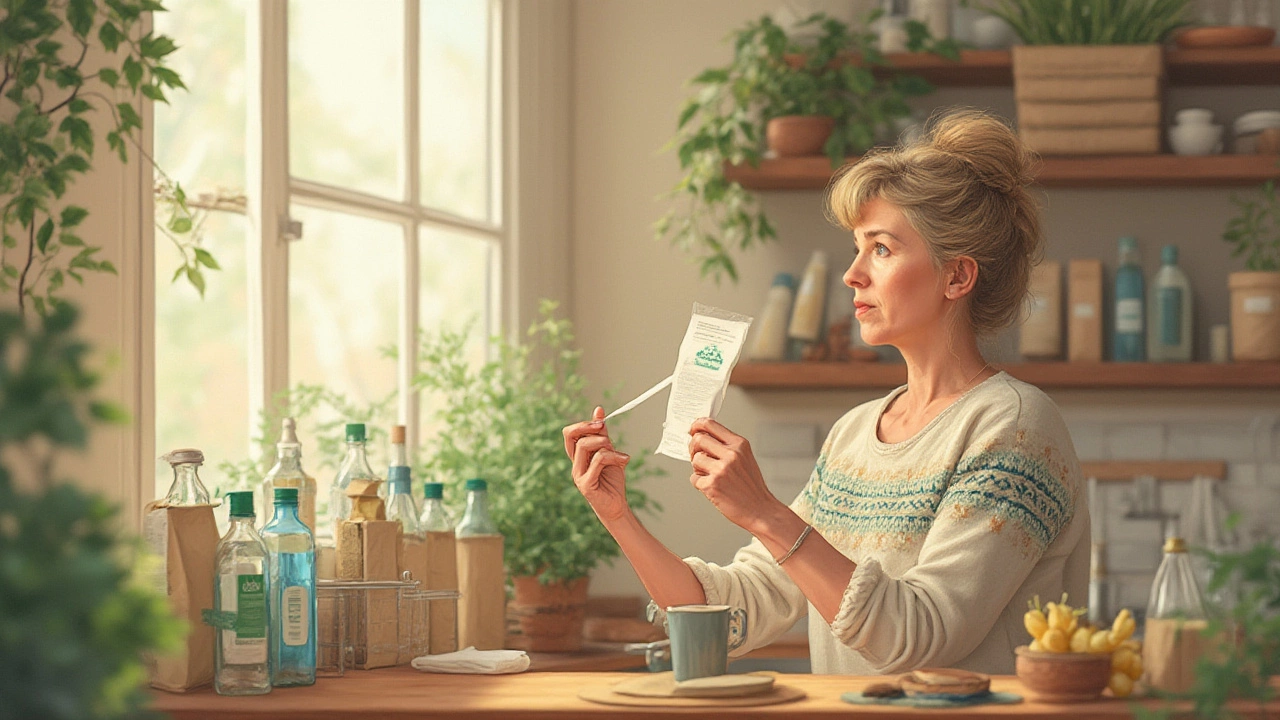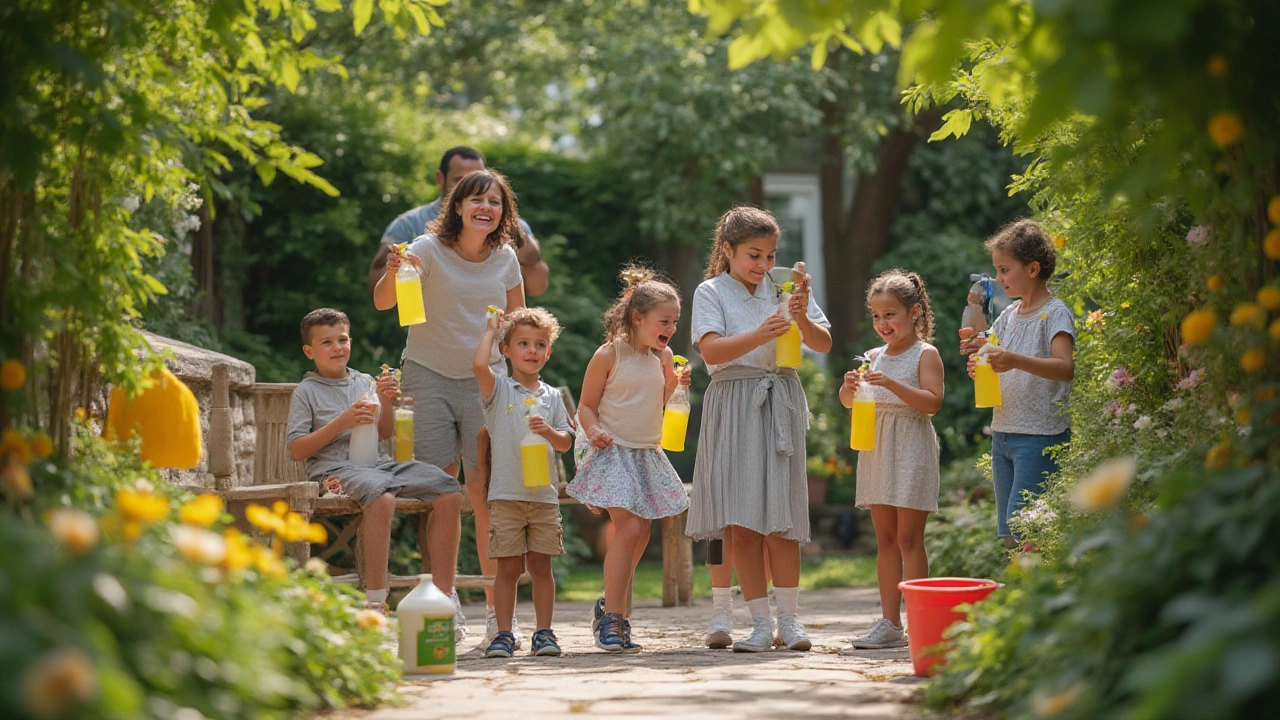Green Cleaning Products: Choose Safe, Effective Eco‑Friendly Solutions
When you hear "green cleaning" you might picture a fancy label or a hefty price tag. In reality, a green cleaner is just a product that does the job without harmful chemicals. It protects your family’s health, keeps indoor air clean, and is kinder to the planet. Below we break down what makes a cleaner green, how to spot the right ingredients, and a couple of simple recipes you can mix at home.
What Makes a Cleaner Green?
The first thing to check is the ingredient list. Look for plant‑based surfactants such as coconut‑derived alkyl polyglucoside or soy‑based detergents. These break down grease just as well as petroleum‑based surfactants but break down quickly in the environment.
Next, avoid anything that says "phosphate," "ammonia," "chlorine bleach," or "synthetic fragrance." Phosphates fuel algae growth in waterways, while ammonia and bleach can irritate lungs and skin. If a product is labeled VOC‑free (volatile organic compounds), it’s less likely to off‑gas chemicals that cause headaches or allergies.
Certification logos can help. Look for reputable seals like EU Ecolabel, Green Seal, or CE mark. These programs test formulation safety, biodegradability, and packaging impact. Just because a bottle is green doesn’t guarantee it’s truly eco‑friendly, so the ingredient list is still king.
DIY Green Cleaners You Can Make at Home
If you like to keep things simple and budget‑friendly, a few pantry staples can replace many store‑bought cleaners. Here are three go‑to mixes that work on most surfaces.
All‑Purpose Spray – Combine 1 cup of distilled water, 1 cup of white vinegar, and 10‑15 drops of citrus essential oil (optional for scent). Vinegar cuts grease, removes mineral deposits, and neutralises odors. Spray on countertops, bathroom tiles, and appliances, then wipe with a clean microfiber cloth.
Glass & Mirror Cleaner – Mix 2 cups of distilled water, ¼ cup of rubbing alcohol, and ¼ cup of white vinegar. Add a splash of dish soap if you need extra shine. The alcohol speeds up drying, leaving a streak‑free finish on windows and mirrors.
Stain‑Fighting Laundry Booster – Add ½ cup of baking soda to your regular laundry detergent. Baking soda softens water, boosts cleaning power, and neutralises odors without harsh chemicals.
These recipes are safe around kids and pets, but always test a small hidden area first, especially on delicate surfaces like natural stone.
Choosing green cleaning products doesn’t mean you have to sacrifice performance. Many professional brands now formulate plant‑based concentrates that outperform traditional cleaners. If you prefer buying, look for clear labeling, minimal synthetic additives, and packaging made from recycled material.
Finally, remember that less is more. Using the right amount of product, letting it sit for a few minutes, and wiping with a quality microfiber cloth often does the trick. Over‑spraying or scrubbing aggressively can wear down surfaces and waste product.
By understanding the ingredients, trusting reputable certifications, and having a few DIY recipes in your back pocket, you can keep your home sparkling clean without compromising your health or the environment.

How to Tell If a Cleaning Product Is Really Eco-Friendly
Learn how to spot real eco-friendly cleaning products by checking certifications, ingredients, and packaging. Avoid greenwashing and choose cleaners that are truly safe for your home and the planet.
Read More
Do green cleaning products really work? The truth behind eco-friendly cleaners
Green cleaning products work for most household tasks-cutting grease, killing germs, and removing stains-without toxic chemicals. Learn which ones actually deliver, how to make them cheaply, and where they fall short.
Read More
Why Are Eco-Friendly Cleaning Products So Pricey? Real Reasons & Money-Saving Secrets
Dig into why eco-friendly cleaning products hit your wallet harder, the real cost behind sustainability, and clever tricks to clean green without breaking the bank.
Read More
The Best Eco-Friendly Outdoor Cleaner: Safe, Effective Options for UK Gardens and Patios
Discover the most effective eco-friendly outdoor cleaners for UK gardens & patios, with tips, facts, and DIY natural solutions to keep your spaces fresh and green.
Read More